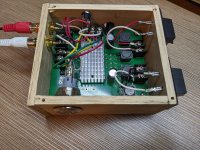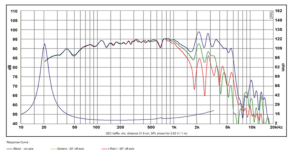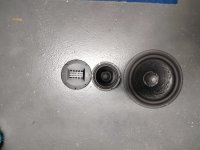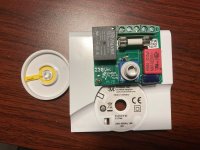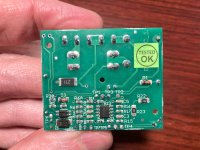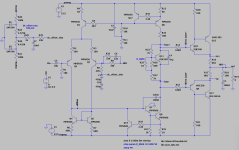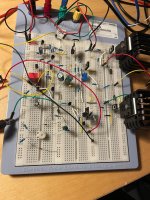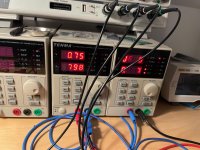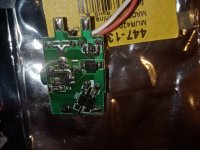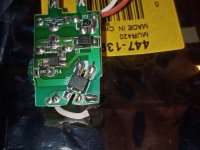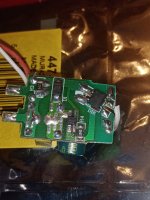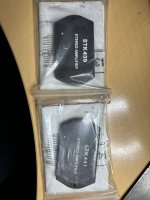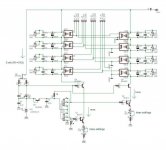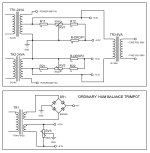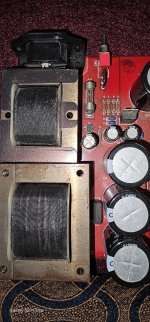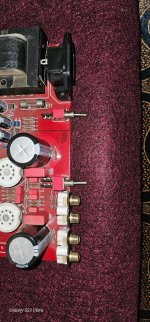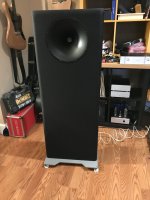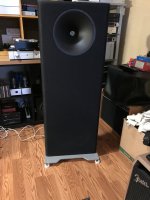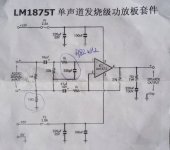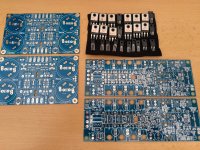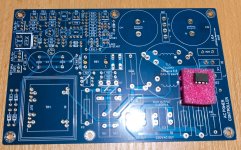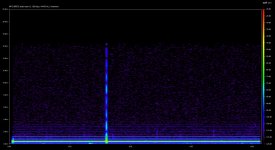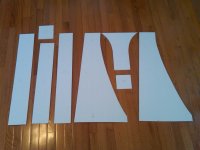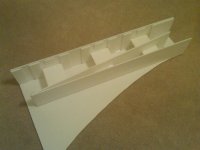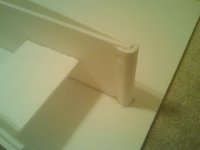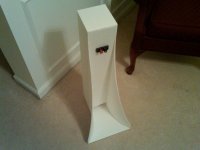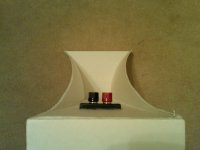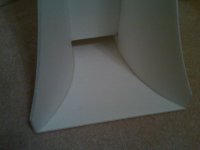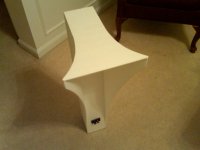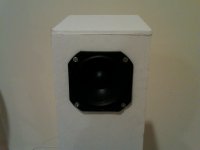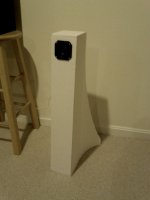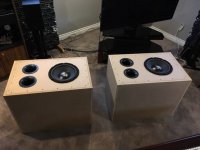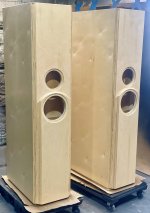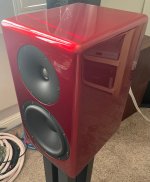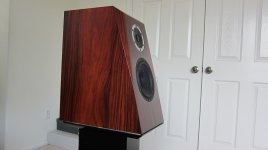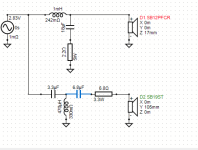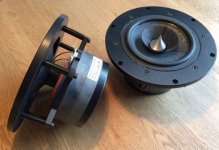Vintage board UAP-02 - RCA 70 Watts - Temperature problems
- By academia50
- Solid State
- 21 Replies
This is a request for help to the older ones here ( me too 😉 ) twho surely knew the RCA power amp based on the UAP-02 board. I'm talking about the 70's. I built the 70 Watt version of this amplifier back then, and every now and then I used it, normally I used it with my PC to feed two small speakers, so it was never used intensively or at high volumes. But, (there's always a first time) lately the left channel started to heat up so I decided to put the noble NAD 3020 in its place, and decided to see what was causing the overheating. I proceeded to check DC voltages at the output (Offset), 1.0 mV on the left channel and 9.0 mV on the right, which I considered acceptable, so the next step was to check the quiescent currents (Bias). As it was recommended in the days of analog multimeters, I did not use the typical procedure of inserting the ammeter in the collector junction of the output TRs with the + B, because the internal impedance of the same would slightly alter the measurement and this method forces us from physically opening the circuit. (Although I remember having done it on DIY - Phillips boards without problems - I do not know if using a digital multimeter the same thing happens) Applying Ohm's Law, in theory the Bias of the left channel was 41.5 mA, and of the right channel 45.9 mA, which caught my attention, I expected that the one that exceeded the maximum recommended by RCA (40 mA) was the channel that was heating up, the left one, but it is the other way around.
That said, I proceeded to adjust the presets of both channels. (RCA recommended installing a 100 Ohm preset instead of R11 in case of temperature problems.) and I managed to adjust both channels as you can see:
+B 39.5 Volts DC / 117.5 Ohms = 33.6 mA.
I was surprised that the preset allowed me to exceed the maximum 100 Ohms, but I suppose that the manufacturing tolerances in those years were quite large.
But, I was greatly surprised to find that after these adjustments, BOTH channels overheated much more, evenly and gradually, and in a few minutes!
With an ambient temperature of 27 ° C, in 10 minutes the heat sinks reached 45 ° C! The amplifier works well, and the offset now, with this temperature, is 8 mV on the right channel and 0.7 mV on the left channel.....At this point, I turn off the amplifier, the 40636 output from RCA indicates maximum 200 °C, but I won't wait to spoil them, this operation is not normal...
I really can't figure out why this can happen, I thought that some TR - input differential pair - could have become unbalanced, which usually causes anomalies in the DC output, but, that failure in both channels simultaneously? And also the DC at the speaker output is not so high...
Should I go back to the traditional Bias adjustment?
What have I forgotten in all these years ?
I will appreciate any thoughts that help !
PS: The diagrams are taken from the web, the notes and measurements do not correspond to my amplifier. I will look for the original diagram and upload it, although being in red I fear that it is not very visible.
That said, I proceeded to adjust the presets of both channels. (RCA recommended installing a 100 Ohm preset instead of R11 in case of temperature problems.) and I managed to adjust both channels as you can see:
+B 39.5 Volts DC / 117.5 Ohms = 33.6 mA.
I was surprised that the preset allowed me to exceed the maximum 100 Ohms, but I suppose that the manufacturing tolerances in those years were quite large.
But, I was greatly surprised to find that after these adjustments, BOTH channels overheated much more, evenly and gradually, and in a few minutes!
With an ambient temperature of 27 ° C, in 10 minutes the heat sinks reached 45 ° C! The amplifier works well, and the offset now, with this temperature, is 8 mV on the right channel and 0.7 mV on the left channel.....At this point, I turn off the amplifier, the 40636 output from RCA indicates maximum 200 °C, but I won't wait to spoil them, this operation is not normal...
I really can't figure out why this can happen, I thought that some TR - input differential pair - could have become unbalanced, which usually causes anomalies in the DC output, but, that failure in both channels simultaneously? And also the DC at the speaker output is not so high...
Should I go back to the traditional Bias adjustment?
What have I forgotten in all these years ?
I will appreciate any thoughts that help !
PS: The diagrams are taken from the web, the notes and measurements do not correspond to my amplifier. I will look for the original diagram and upload it, although being in red I fear that it is not very visible.
Attachments
-
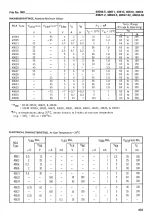 2-bb163c3178.webp96.5 KB · Views: 126
2-bb163c3178.webp96.5 KB · Views: 126 -
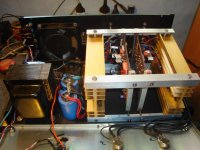 Instalación fuente y Led - Potencia RCA 007.jpg96.6 KB · Views: 90
Instalación fuente y Led - Potencia RCA 007.jpg96.6 KB · Views: 90 -
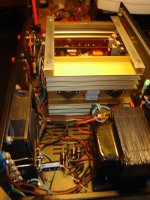 Instalación fuente y Led - Potencia RCA 032.jpg108.3 KB · Views: 91
Instalación fuente y Led - Potencia RCA 032.jpg108.3 KB · Views: 91 -
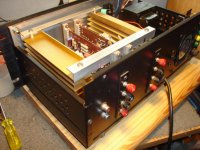 Instalación fuente y Led - Potencia RCA 037.jpg107.9 KB · Views: 93
Instalación fuente y Led - Potencia RCA 037.jpg107.9 KB · Views: 93 -
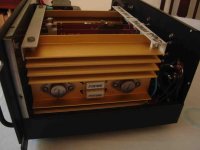 Potencia RCA 031.jpg68.8 KB · Views: 97
Potencia RCA 031.jpg68.8 KB · Views: 97 -
 Instalación fuente y Led - Potencia RCA 017.jpg135.7 KB · Views: 113
Instalación fuente y Led - Potencia RCA 017.jpg135.7 KB · Views: 113 -
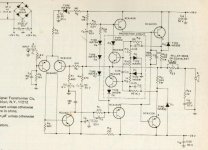 amp6.jpg91.3 KB · Views: 132
amp6.jpg91.3 KB · Views: 132 -
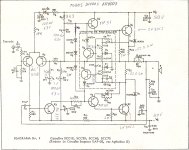 circuito.jpg479.6 KB · Views: 130
circuito.jpg479.6 KB · Views: 130
